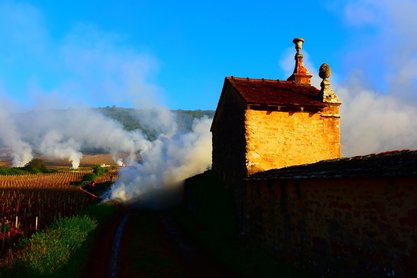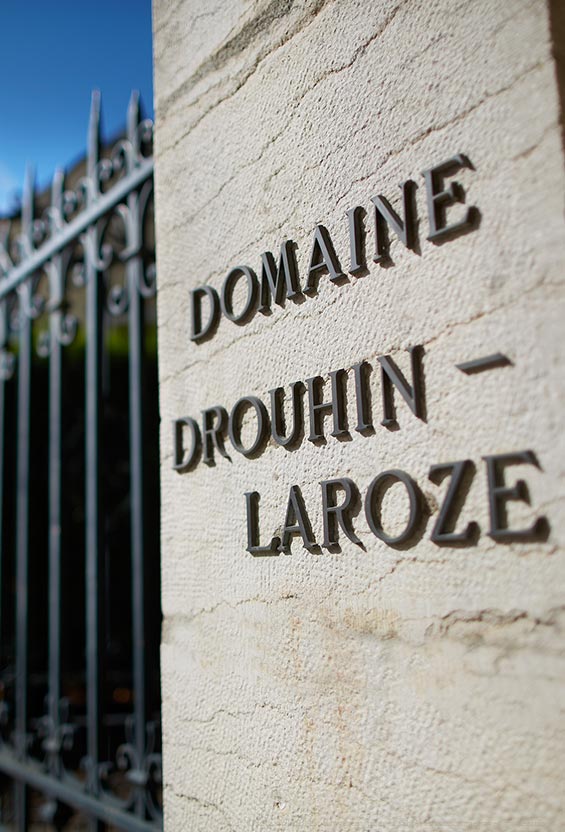
About the Climate 2017
Climatic parameters for year 2017
Bud-break on the vines: early April
Flowering: rapidly, from end May to early June
Harvest: from Wednesday 6th to Friday 15th September
End of vinification: 17th October
Summary of year 2017:
Autumn-Winter 2016-2017: mainly dry with a notably cold period over December and January.
Spring: frost warnings and mainly dry
Summer: very dry and hot.
Important detail: The Côte de Nuits and Côte de Beaune experienced a burst of solidarity as the winemakers of numerous villages took action together against the frost.
Climate
Autumn-Winter
Only the months of November, February and March held their own in reaching or slightly exceeding seasonal norms. Nevertheless, with a deficit of 75mm over this period, the season began with the signs of a water shortage, but without talk yet of water stress. Regarding winter 2016-17, we mostly remember the markedly cold period over December and January. It was a long time since such low temperatures had been noted over as significant a period.
Radical change in February and March, where normal levels were exceeded by 2°C!
Spring:
April, May and June were marked by a few rainy spells, sometimes significant, but the total rainfall levels were very variable from one village to the other. In April, rainfall did not exceed 32 mm against a norm of 58 mm... In May, storms further accentuated the difference between the very wet zones - southern Côte de Beaune- and the others, where the water situation was critical.
At the beginning of summer, the average deficit since January stood at 52 mm. Temperatures were normal in April and May, followed by a significant rise in warmth in June (+2.3°C above normal).
Frost outbreak:
Very luckily, the outbreaks of frost did not reach the scale of 2016. Nevertheless, once again, the vineyards around Châtillon found themselves hit hard from 19th April. Between 19th and 25th April, on the Côte and the Hautes-Côtes, low hygrometer values and the presence of the wind very strongly limited their impact. When new outbreaks of frost were announced between 27th and 29th April, the "fire war" was organised... In very quick time, the ODG viticultural organisations and winemakers deployed rows of bales of straw around susceptible pockets of vineyard. In the early morning, the Côte took on a thick mantle of smoke, thereby protecting frozen buds from being burnt by the morning sunrise.
Summer :
In a very dry summer, the rainfall deficit was to be accentuated throughout, with water gauges confirming a lack of more than 200 mm in certain villages. No improvement in August, but nevertheless and very fortunately with a rainy spell on the eve of harvesting that was more than welcome (20 to 30 mm). Temperatures remained high until end August. There were to be 20 days between end May and end August with temperatures above 30°C.
Vegetative cycle
Despite a cold winter, the return to mild conditions in mid-March would suffice to favour a restart to growth in the vines. With peaks of temperature close to 25°C in early April, the tempo picked up and we found ourselves on the same basis as for the very early harvest years (2014-2011). Then, a complete change of situation during the second half of April... The risk of frost was virtually permanent and everyone had eyes fixed on the thermometer. In May, vegetative development slowed down over 3 weeks and repositioned 2017 at the level of a normal year.
The last ten days of May, thanks to a lovely boost in temperatures, brought explosive growth and, within a week, certain parcels went into full flowering. In the first ten days of June, vine flowering was finished and was to have lasted an average of one week. Heat and humidity always favour a frenetic growth rate, imposing a very heavy work routine. The last ten days of June were marked by stifling temperatures (38°C) and provoked extremely rapid growth of the grapes. In early July, rainy spells relieved the situation of the most highly water-stressed parcels, but alternating rain and heat in July maintained a very rapid grape development rhythm. 2017 therefore re-joined the ranks of very early vintages such as 2007 or even 2011. At the very start of August, certain early-ripening but low grape density parcels had already reached 70% of veraison. By 10th August, veraison was virtually finished on the whole of the Côte.
Harvest 2017
Harvesting was to start on 6th September in very favourable conditions, with grapes of exceptional ripeness and healthiness. Yields matched up in all sectors, imposing special attention on the order in which parcels were brought in, so as to carefully choose the optimum date to obtain perfect phenolic maturity.
Temperatures cooled, allowing the 2017 grape harvest to be carried out in the best of conditions. As in every year, constant and minute attention was necessary for the vinification of vintage 2017. Overall high yields needed rigorous selection on the vine and by the sorting team, so as to vinify only the best bunches. The length of cold pre-fermentation macerations was increased to achieve progressive and complete extraction.
The daily tastings by the trio of winemaker Nicolas, Philippe and Caroline allowed vinification and de-vatting to be programmed in perfect harmony with the evolution of each cuvee.
Notes de la première dégustation
With regard to the first in-barrel tastings, this vintage is rich and complete, with lovely aromatic intensity, silky and well present tannins, underpinned by elegant freshness. 2017 will reveal itself to be worthy of all the work done and in the continuity of the "famous" preceding vintages!


